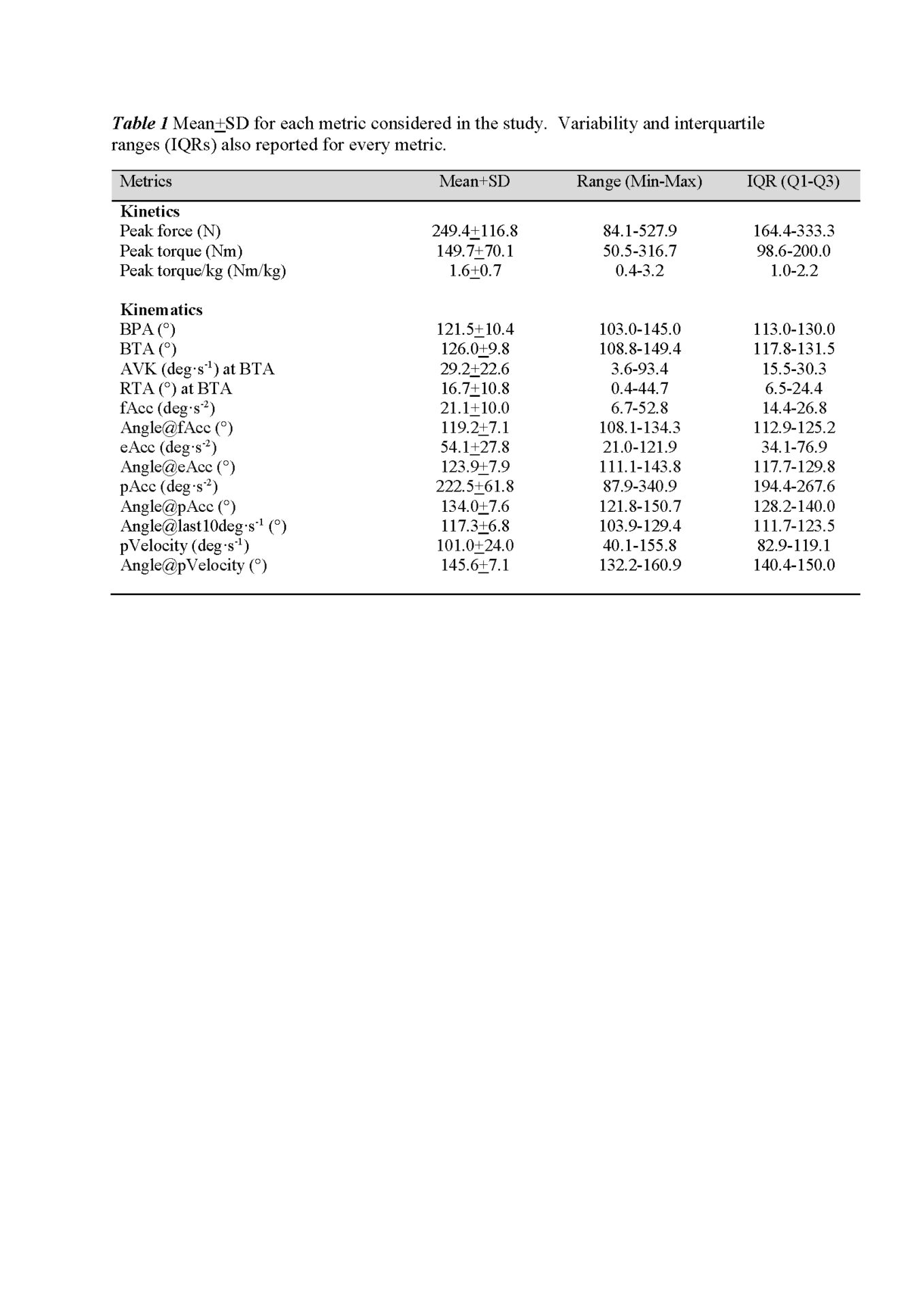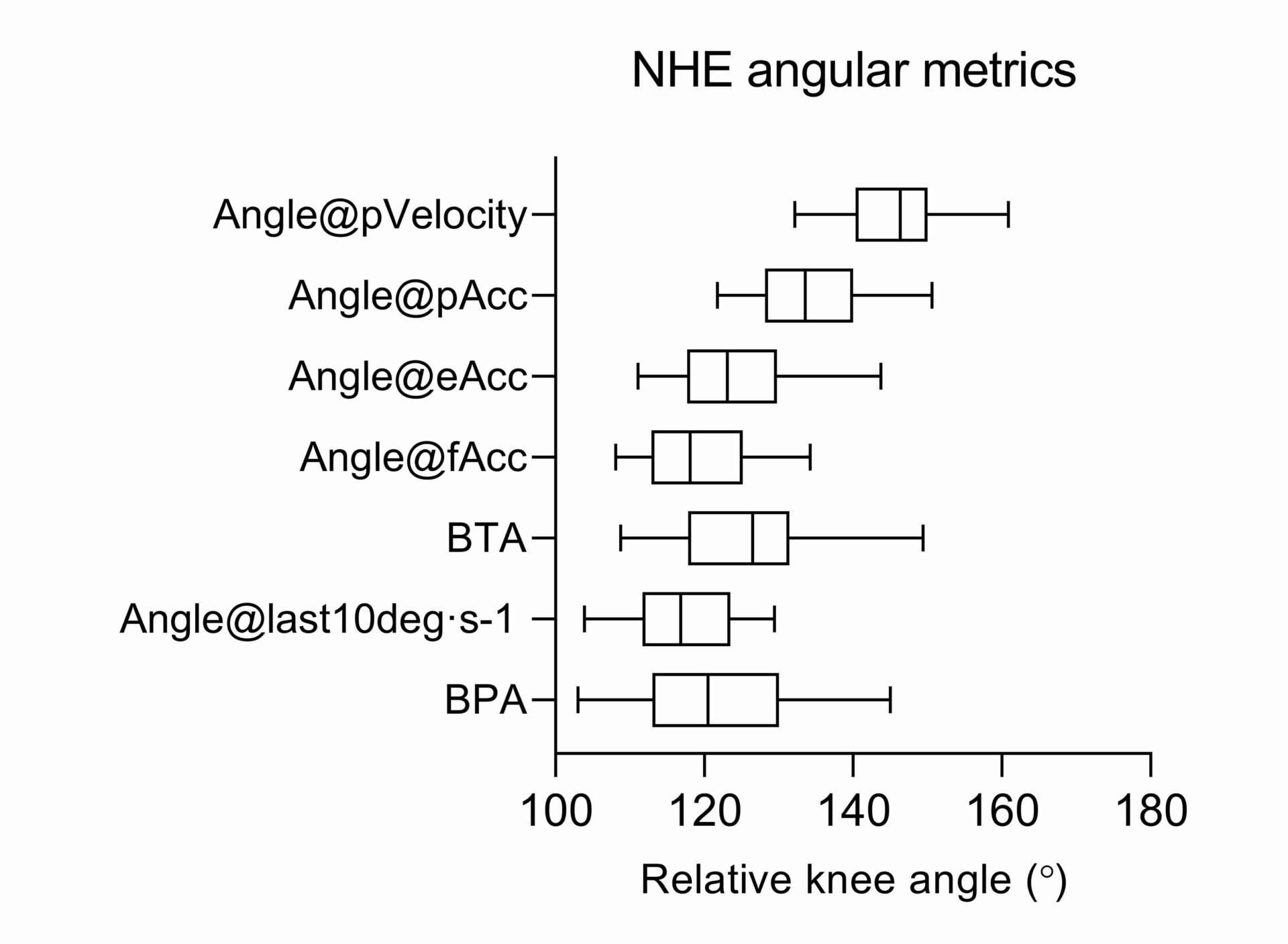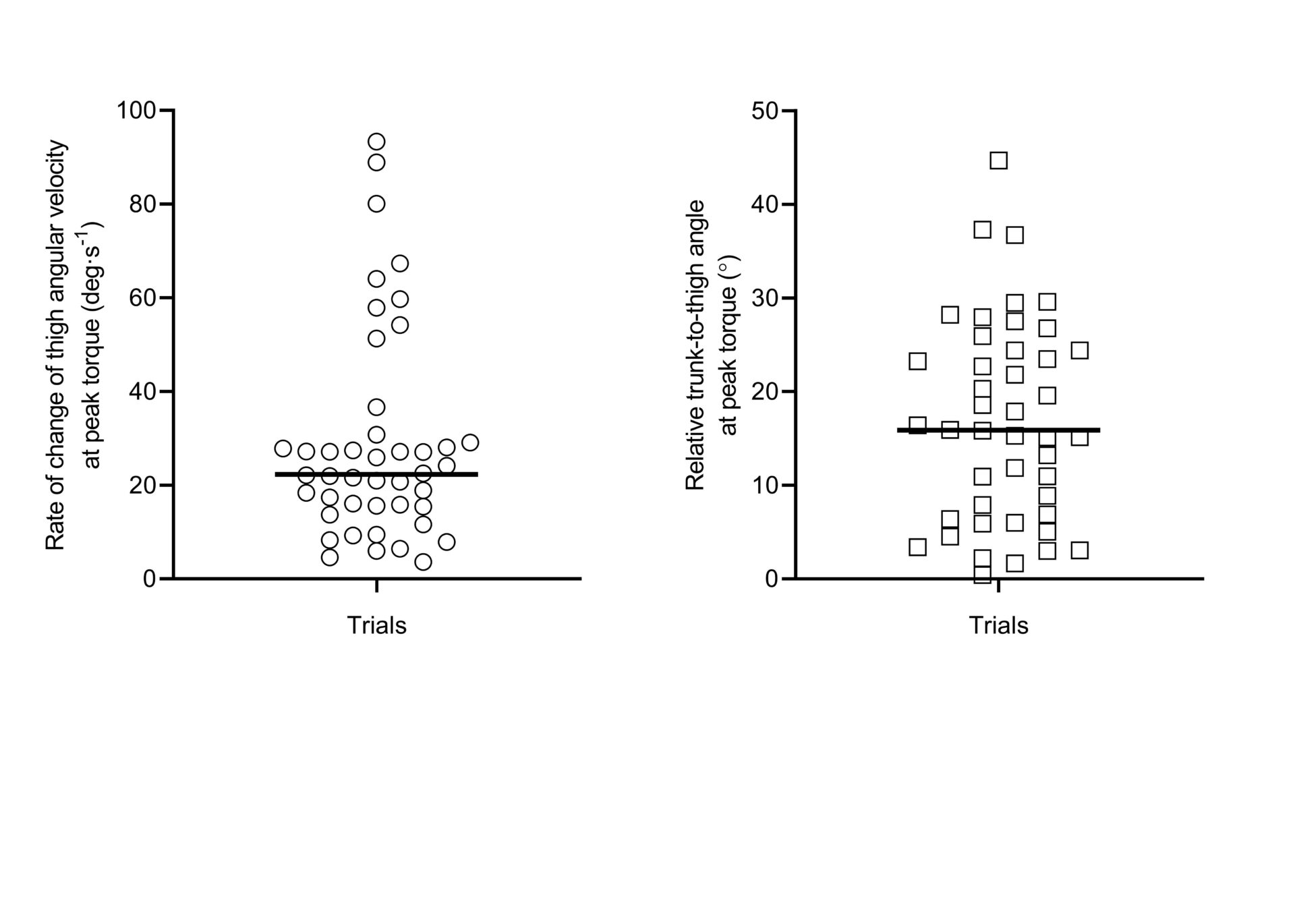Introduction: There has been a large amount of research focused on hamstring strain injuries in the last decade. As these types of injuries have frequent reoccurrence within 2 years (14-63%) (Brukner, 2015), prevention of initial injury is critical. Nordic hamstring exercise training has attracted much interest in the literature, due its success in reducing hamstring strain injuries, by up to 51% (Van Dyk et al., 2019) when employed as a component of preventative training programmes (Petersen et al., 2011; Van Der Horst et al., 2015). Following the development of a novel hamstring training device (NordBord) by Opar et al., (2013), much of the subsequent research has centred on using Nordic eccentric knee flexor strength as a kinetic measure. There has been a rise in the use of kinematic variables, sometimes in place of force measurement, to provide a biomechanical analysis of the Nordic hamstring exercise action. However, variation in the methods used and a lack of clarity when defining terminology has made comparison between similar exercise studies difficult. Aim: We aimed to assess the utility of kinetic and kinematic metrics to assess Nordic hamstring exercise technique by comparing several metrics collected concurrently. Methods: Ethical approval for the study was approved by the Sheffield Hallam University Ethics Committee. Kinetic metrics collected were peak force, peak torque and peak torque normalised to body mass. Kinematic metrics collected included break-point angle, break-torque angle, relative trunk-to-thigh angle, angular velocity of the knee joint, first acceleration, angle of first acceleration, acceleration elbow angle at acceleration elbow, peak acceleration, angle at peak acceleration, peak velocity, angle at peak velocity and angle at last instance of 10 deg·s-1. 18 recreational male participants completed 3 bilateral Nordic hamstring exercise repetitions on a hamstring device equipped with in-line strain gauge load cells, integrated with a 3-dimensional motion tracking system. Results: Mean break-point angle occurred after the angle at first acceleration (121.5+10.4° vs. 119.2+7.1°) whereas break-torque angle occurred later in the Nordic hamstring exercise action (126.0+9.8°) showing highest correlation to the angle at greatest acceleration (123.9+7.9°, r=0.85). Future research should consider movement quality as the angular velocity of the knee joint at break-torque angle demonstrated large variation (range=3.6-93.4 deg·s1), and there was high intrasubject variability of relative trunk-to-thigh angle at peak-torque (range=0.4-44.7°). Conclusions: This report proposes standardisation of methods and terminology used to define the Nordic hamstring exercise, providing a range of definitions, and allowing simpler comparison between kinematics research. Measuring break-torque angle is recommended to represent the proxy muscle length point at which hamstring muscle failure occurs, providing a specific metric relative to the proposed injury mechanism during high-speed running.
Physiology 2021 (2021) Proc Physiol Soc 48, OC64
Oral Communications: Nordic hamstring exercise metrics: how valid are they?
Emma Sconce1, Ben Heller1, Tom Maden-Wilkinson2, Nick Hamilton1
1 Sports Engineering Research Group (SERG), Advanced Wellbeing Research Centre (AWRC), Sheffield Hallam University, Sheffield, United Kingdom 2 Physical Activity, Wellness and Public Health Research Group (PAWPH), Advanced Wellbeing Research Centre (AWRC), Sheffield Hallam Univeristy, Sheffield, United Kingdom
View other abstracts by:
Where applicable, experiments conform with Society ethical requirements.



